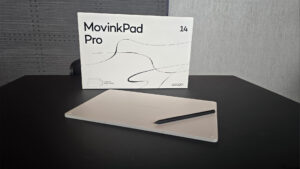If you’ve been on social media in the past few months, you may have seen videos showcasing a portable dual monitor. With all the excitement and its intriguing design, we decided to review the JSAUX FlipGo Portable Dual Monitor to see if it is worth your time. This innovative device brings a fresh approach to portable displays, packing two screens into a compact, foldable design. Surprisingly, it manages to impress, even though it may not be the most portable option for those who want to travel light.
While working at CGMagazine, I was spoiled by a dual monitor setup, which is something I find hard to give up when travelling. Enter a device like the JSAUX FlipGo. While there is a lot of hype around what it can do, at its core, the FlipGo is a dual 13.5″ or 16″ monitor system that can be easily transported and set up wherever you need extra screen real estate. The monitors boast an impressive 2256 x 1504 resolution and 400 nits peak brightness, providing crisp visuals for work or play. With a 3:2 aspect ratio, these monitors offer plenty of vertical space, which is particularly useful when editing documents, programming or browsing long web pages.
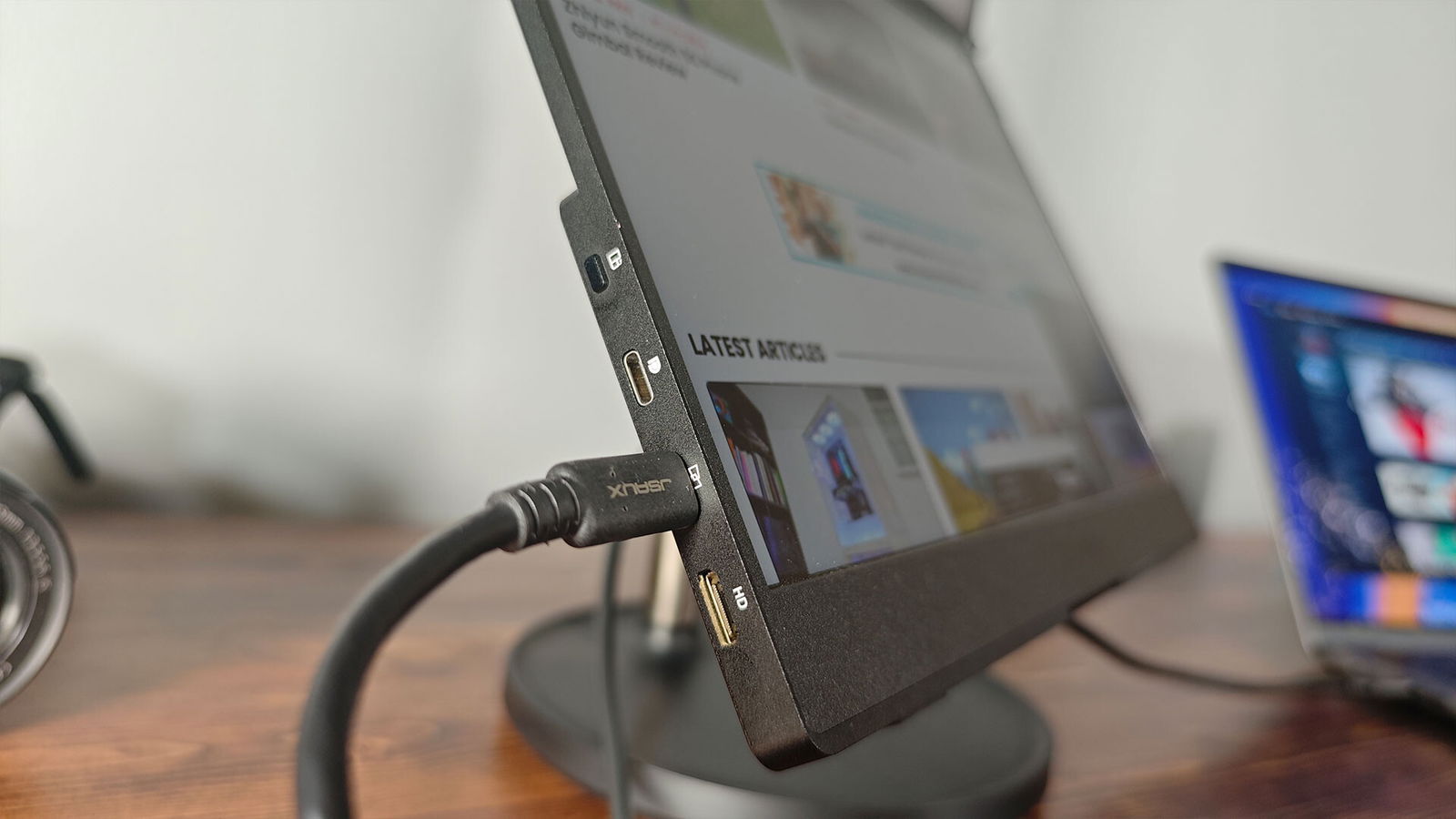
The FlipGo’s design is sleek and modern, with a clamshell form factor that protects the screens when not in use. When opened, the dual monitors can be positioned in various configurations to suit your workspace and preferences. The build quality feels solid, with a metallic housing that gives the device a premium feel. It is also built to travel with you, working almost like a laptop, keeping the screens safe while in transport, be it in a carry-on bag or suitcase.
JSAUX’s attention to detail extends to the accessories included with the FlipGo Portable Dual Monitor. The package typically includes necessary cables and adapters, which is appreciated given the variety of potential connection scenarios users might encounter. It includes everything you would need to get going, and they offer many accessories to ensure you can get the most out of your screen.
Speaking of accessories, JSAUX has gone above and beyond with the mounting options to get the most out of the screen. The Snap Stand provides a traditional monitor stand experience, ideal for desk set-ups. For those who prefer a more protective solution, the Flex Folio acts as both a stand and a case. There’s even a VESA adapter for users who want to attach the FlipGo to an existing monitor arm. The company has really thought about what the FlipGo could do and has delivered on most of those possibilities and then some.

In terms of display quality, the FlipGo Portable Dual Monitor holds its own against other portable monitors in the same price range. The IPS panels offer good colour reproduction and viewing angles, making them suitable for both work and entertainment. The 3:2 aspect ratio, although less common, provides a good balance between horizontal and vertical space. For those concerned about eye strain during long work sessions, the FlipGo has a blue light reduction feature that can be activated to make prolonged use more comfortable.
“JSAUX’s attention to detail extends to the accessories included with the FlipGo Portable Dual Monitor.”
The weight of the FlipGo is a consideration for those who plan to carry it around regularly. The 13.5-inch model weighs in at around 1.16kg, while the 16-inch version is slightly heavier. While not featherweight, these weights are reasonable when you consider that you’re getting two screens in one box. It may not seem like much, but on longer journeys, the weight adds to what you are carrying, which can be a nuisance at times. Thankfully, the device is easy to set up at your hotel or wherever you are staying, and you can have everything up and running in minutes. Then you can set it up and forget it.
JSAUX has given considerable thought to the connectivity options for the FlipGo. The device features multiple USB-C ports, USB-A ports, and even a mini HDMI input, providing flexibility in how you connect your devices. This array of ports allows the FlipGo to function not just as a display but also as a hub for your peripherals. While travelling to Taipei for Computex 2024, I used the FlipGo in my hotel room, giving me a workstation away from home that, with a simple cable, gave me a full setup, including all my peripherals ready to go.
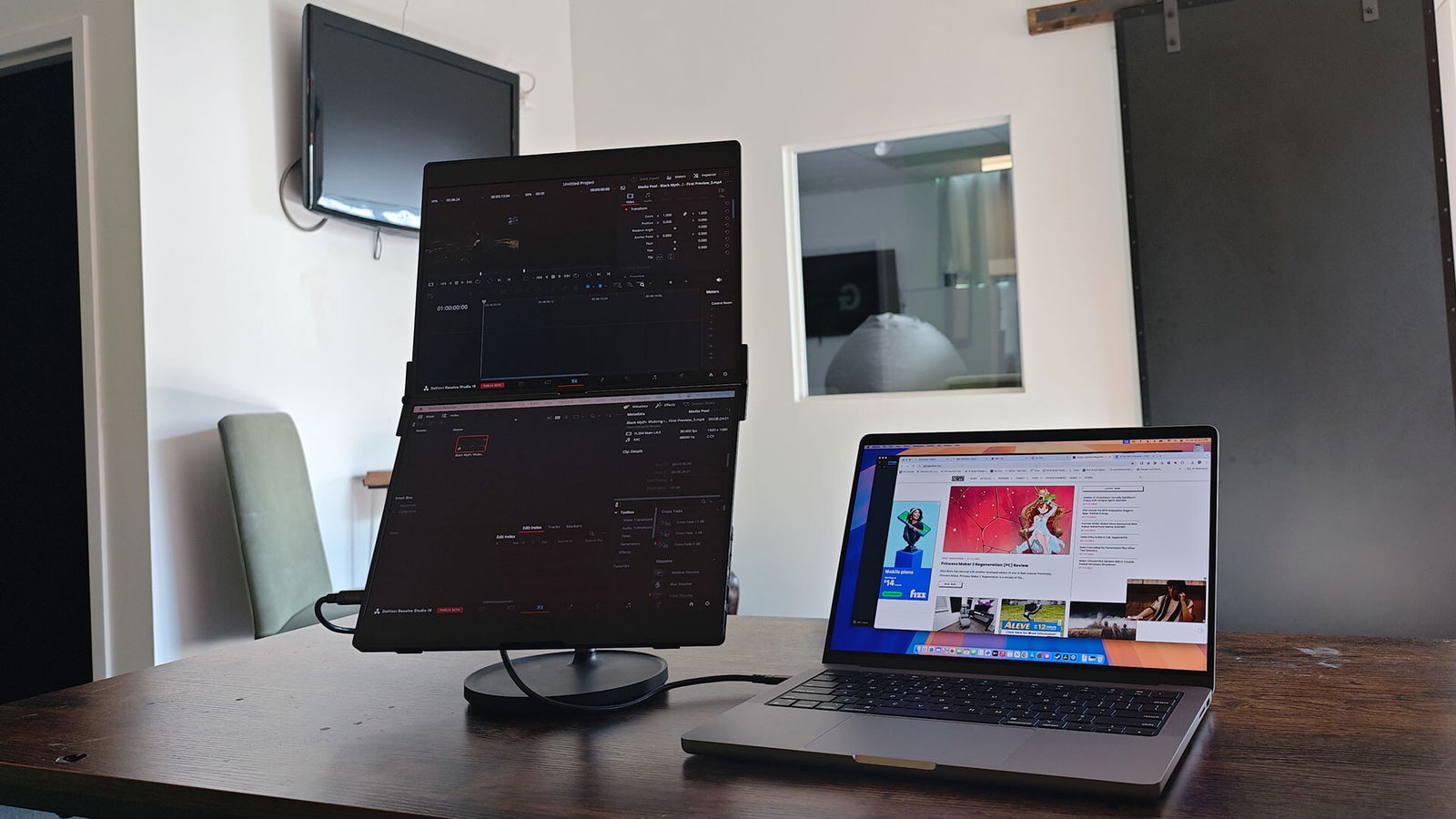
This brings me to perhaps one of the FlipGo’s most appealing aspects: its plug-and-play nature. In many cases, you can connect the JSAUX FlipGo Portable Dual Monitor to your laptop or other devices with a single USB-C cable that provides both power and the display signal. This simplicity is a boon for those who move frequently between workspaces or travel for business.
Even more impressive is its versatility, with different display modes to suit a range of use cases and devices. Users can opt for the standard dual screen setup, perfect for multitasking with different applications side by side. For those who prefer a more expansive view, the UltraView mode combines both screens into a single large display, creating an immersive experience for tasks that benefit from a wider canvas.
“In terms of display quality, the FlipGo Portable Dual Monitor holds its own against other portable monitors in the same price range.”
But what can these dual screens offer? Honestly, the JSAUX FlipGo can do most things you would do on a standard monitor. Depending on your orientation, they are great for working on design work or video editing; they are also fantastic for coding or many other workflows where a vertical display comes in handy. I tried a range of different applications, and everything worked as I would hope. The screens are crisp enough for most types of creative or productivity tasks, and they provide enough contrast to ensure everything from media to text looks good enough for daily use.
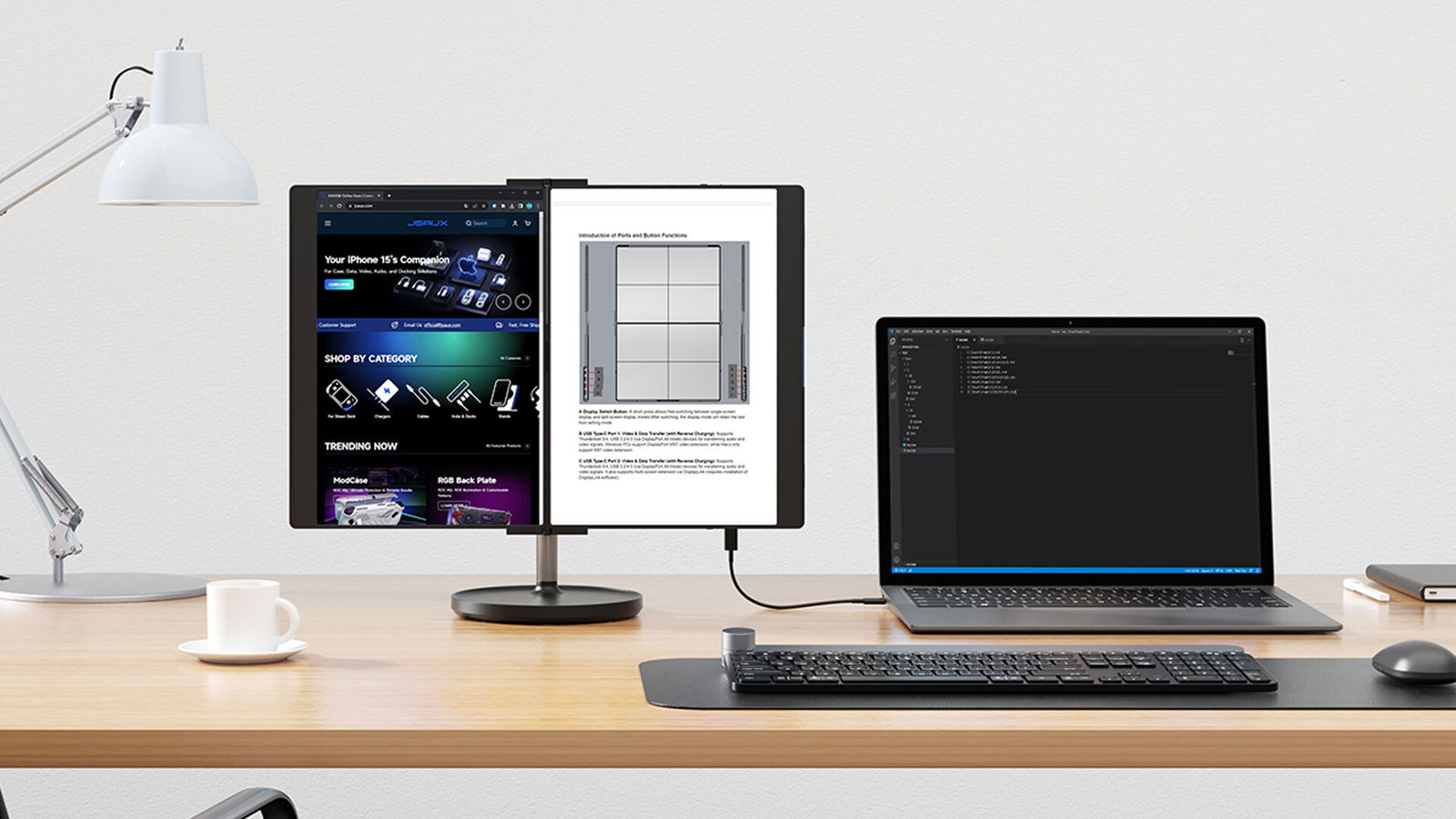
Here at CGMagazine, gaming is kind of our thing, so we had to see how the JSAUX FlipGo stood up to the challenge. While its 60Hz refresh rate may not be ideal for competitive gamers looking for ultra-smooth motion, it’s more than capable of providing an enjoyable gaming experience for casual gamers. The dual-screen setup can be particularly useful for strategy games or simulators where additional information is beneficial. It may not be the best game-focused screen you can find, but for gamers looking to get the most out of a trip, it more than satisfies the need for some late-night sessions of Baldur’s Gate 3 or Civilization V without an issue.
“In many cases, you can connect the JSAUX FlipGo Portable Dual Monitor to your laptop or other devices with a single USB-C cable that provides both power and the display signal.”
Another area worth mentioning is FlipGo’s software support. JSAUX has developed its own software to manage the display modes and settings, which adds to the overall user experience. The ability to switch between different display configurations at the touch of a button is a nice touch that enhances the device’s usability. Although not entirely necessary, it does help to get everything set up and running correctly.
I tested FlipGo on several Windows-based laptops, including the latest MacBook Pro M3, and it worked easily on all of them. On the Mac, the software helped to organize everything and make it a little more intuitive, although the process is largely painless no matter what operating system you are using. JSAUX have recently updated the software for OSX and it works very well, getting everything set up and running the way you want. It also now includes layout protection and improved customization, making the experience incredibly intuitive and consistent, even through reboots and shutdowns.
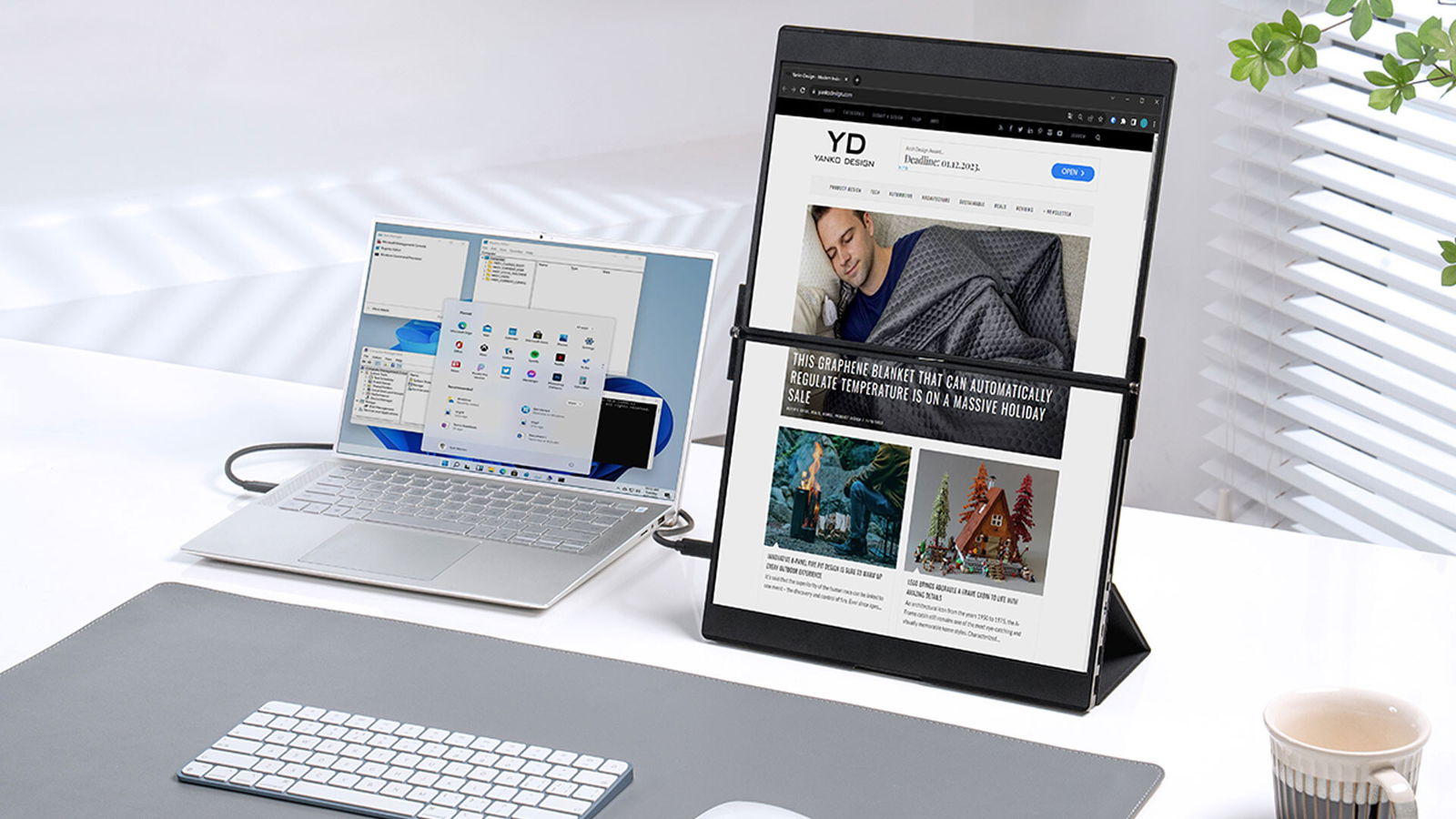
While I liked most of what the screen offered, there is one area I hope to see improved in future iterations: the brightness levels. If you’re hoping to use the FlipGo with a single USB-C cable, you’ll quickly notice that the screen is quite dim. This is intentional and helps to keep the screen from draining your laptop, but it is far from the ideal way to use the screen.
For any major work, I recommend using the screen with the adapter plugged in. It has the added benefit of charging your laptop, and the brightness is much more usable, especially for writing or design work. That said, the 400 nits peak brightness is low, especially if you are used to OLED screens, so it might be something to consider if you require blinding displays for your work.
As mentioned earlier, battery life is always an issue with portable monitors, and the FlipGo is no exception. When powered by a laptop, it will obviously draw more power than a single external display. Users who plan to spend a lot of time away from a power outlet should factor this into their calculations and perhaps consider carrying an adapter or the FlipGo’s own power supply. I didn’t find it to be an outrageous drain, but when every minute of power counts, it’s something to bear in mind.
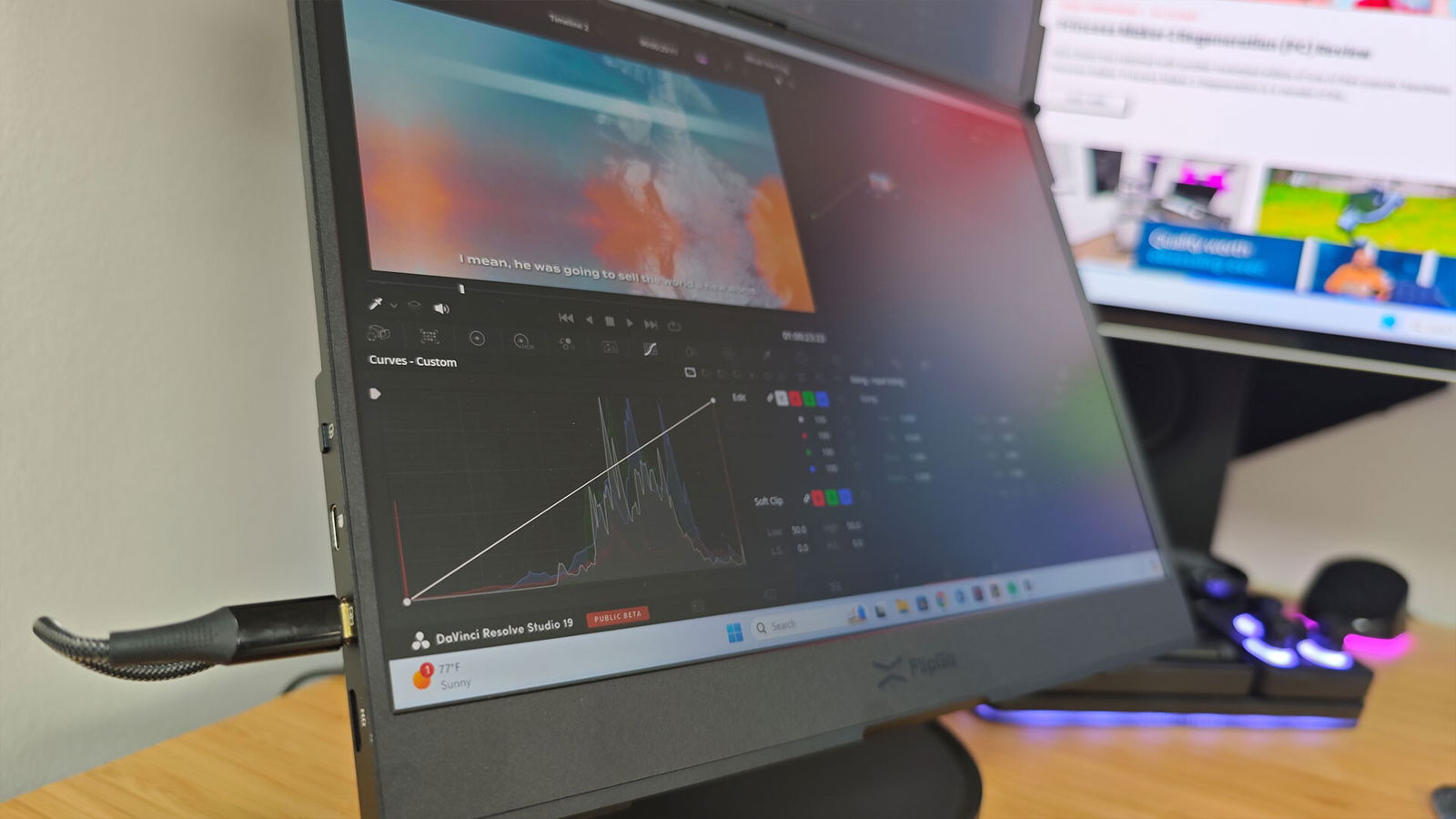
That said, the JSAUX FlipGo Portable Dual Monitor was a lifesaver when it came to content creation while travelling. Video editors can use one screen for their timeline and the other for preview, while graphic designers can keep their tools on one display and their canvas on the other. The flexibility in screen orientation also allows for a vertical setup, which can be beneficial for coding or working with long documents.
After spending over a month with the JSAUX FlipGo Portable Dual Monitor, I have to say I am impressed. It offers a solution for those who find a single external display insufficient but don’t want the bulk and setup complexity of two separate monitors. The JSAUX FlipGo Portable Dual Monitor’s blend of portability, functionality, and innovative design makes it a noteworthy contender in the ever-evolving landscape of mobile workspaces. It is also a great companion to any content creator out there who wants to get the most out of their work setup on a trip.
JSAUX has delivered a fantastic option for people working on the go, and the FlipGo represents a step forward for anyone looking for the best possible mobile work setup. While it may not be the perfect solution for gamers, it certainly offers a compelling option for professionals, creatives, and anyone else who values screen real estate and flexibility in their mobile setup.





